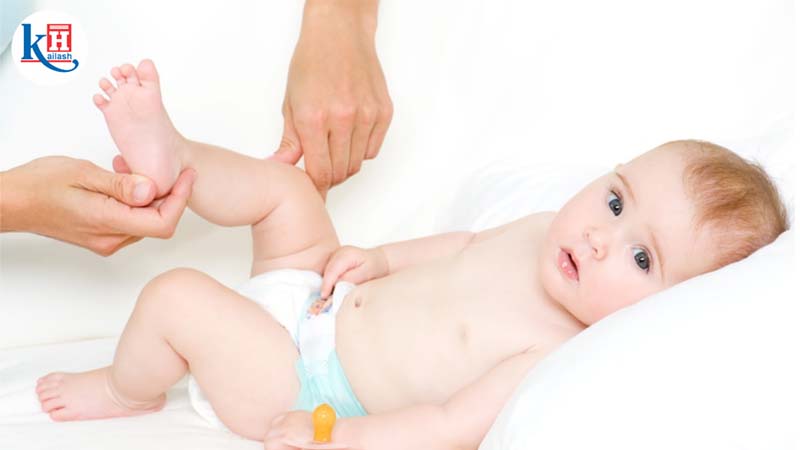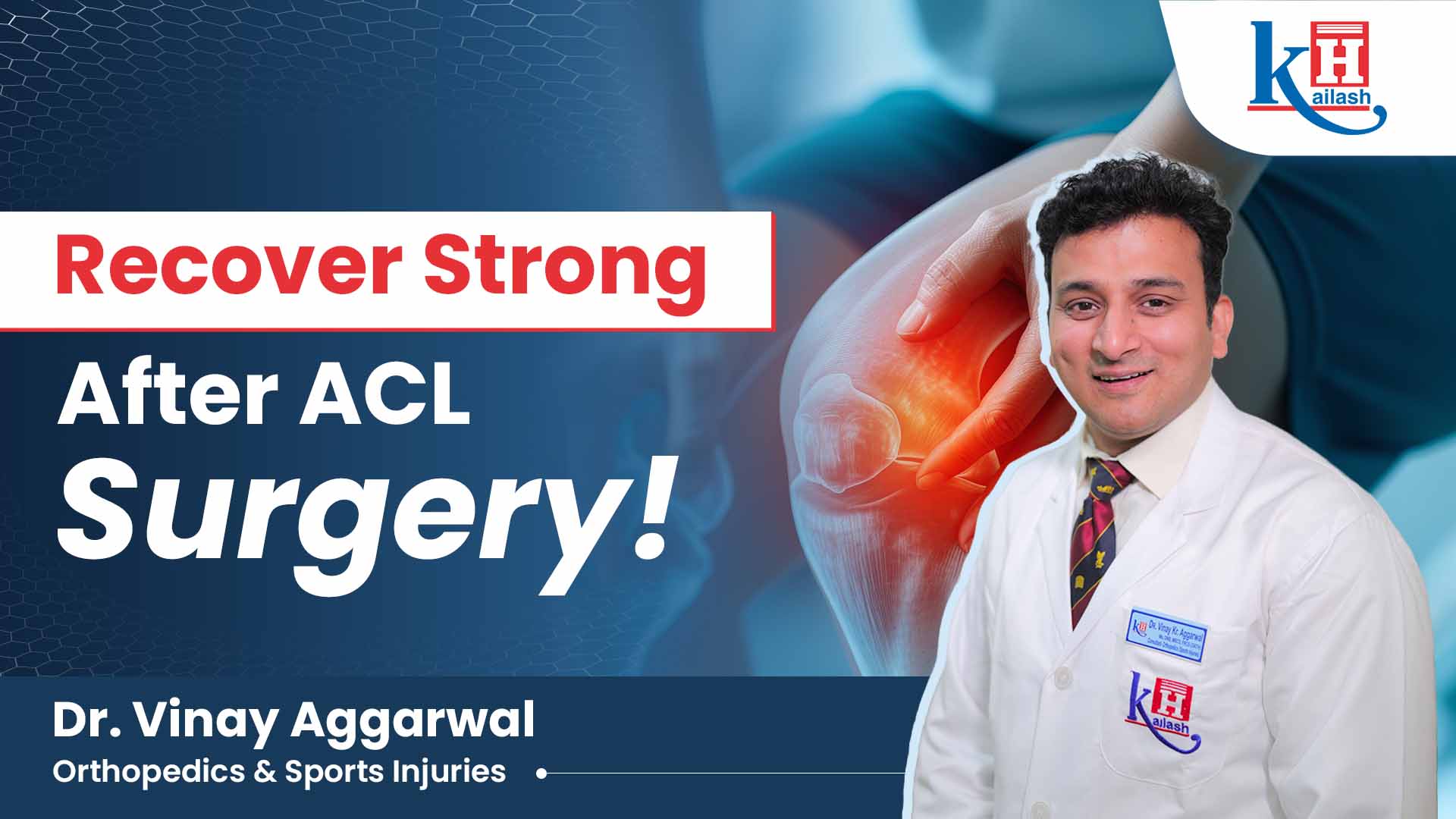Understanding Hip Dysplasia in Babies: Causes, Symptoms, and Treatment
Verified By Dr. Gaurav Agarwal | 27-Nov-2023
Hip dysplasia is a common condition that affects infants, involving abnormal development of the hip joint. It can range from mild to severe and requires early detection and appropriate treatment for optimal outcomes. In this article, we will delve into the world of hip dysplasia in babies, exploring its causes, symptoms, available treatment options, and the importance of seeking expert care. Additionally, we will highlight the best pediatric surgeon in Noida and the best child hospital in Noida for comprehensive and specialized care.
Understanding Hip Dysplasia in Babies:
The hip joint attaches thigh bone (femur) to pelvis. Hip dysplasia occurs when the hip joint is not properly formed, leading to instability and potential dislocation. In Developmental dysplasia of the hip (DDH), the socket of hip is too shallow and femoral lead is not tightly held in place, so the hip joint is loose. In severe cases, the femur bone can come out of socket (dislocate). The condition can be present at birth or develop during the first months of life. The exact cause of hip dysplasia is often unknown, but several factors can contribute to its development.
Causes of Hip Dysplasia in Babies:
- Genetic Predisposition: A family history (parents/ siblings) of hip dysplasia increases the likelihood of an infant developing the condition.
- Positioning in the Womb: Incorrect positioning in the womb can place excessive pressure on the hip joints, leading to abnormal development.
- Hormonal Factors: Hormonal imbalances in the mother during pregnancy can affect the development of the baby's hip joints.
- Breech Presentation: Babies born in the breech position (feet first) after 28 weeks of pregnancy have a higher risk of hip dysplasia.
- Sex: It is more commonly seen in girl child and first born child.
- Oligohydramnios - Low level of amniotic fluid.
Symptoms of Hip Dysplasia in Babies:
Identifying the signs and symptoms of hip dysplasia is crucial for early intervention. Some common indicators include:
- Limited Range of Motion: Restricted movement in one or both hips may be noticed during diaper changes or when attempting to move the baby's legs.
- Asymmetrical Skin Folds: Uneven or extra skin folds on the thighs or buttocks can indicate hip dysplasia.
- Clicking or Popping Sensation: A clicking or popping sound or sensation when moving the baby's hips may suggest instability.
- Uneven Leg Lengths: One leg appearing shorter than the other can be a sign of hip dysplasia.
- Difficulty Crawling or Walking: Delayed crawling or walking milestones can be associated with hip dysplasia. A limp or "waddling" gait is alarming as it is a late sign of DDH.
Diagnosis and Treatment of Hip Dysplasia in Babies:
To diagnose hip dysplasia, a thorough examination is conducted by a pediatrician or orthopedic specialist. The examination may include:
- Physical Examination: The doctor will assess the baby's hip joint mobility, leg lengths, and observe any signs of instability or abnormality.
- Imaging Studies: X-rays or ultrasounds (@4-6 weeks of age) may be ordered to provide a detailed visualization of the hip joint and confirm the diagnosis. Also babies have an ultrasound scan (at 4-6 weeks) if there have been childhood hip problems in family or baby born in breech position.
Treatment options for hip dysplasia vary depending on the severity of the condition. Mild cases may resolve with non-surgical methods, including:
- Pavlik Harness: A specially designed (Fabric Splint) harness is worn by the baby to hold the hips in a stable position, promoting proper alignment and development. The harness needs to be worn constantly for 6 to 12 weeks & should not be removed by anyone except health professionals.
- Closed Reduction: If the hip dysplasia persists or is more severe, a closed reduction procedure may be performed to reposition the hip joint manually after 6 months of age.
- Spica Casting: Following a closed reduction, a cast is applied to keep the hip joint in the correct position for several weeks.
In some cases, surgical intervention may be necessary, especially for severe or persistent hip dysplasia. Surgical options include:
- Open Reduction: The surgeon surgically repositions the hip joint and may use pins, screws, or plates to stabilize it.
- Osteotomy: In cases where the bone structure needs to be altered, an osteotomy procedure may be performed to reshape the hip socket or femur.
Exercises for Hip Dysplasia in Babies:
In addition to medical interventions, exercises can play a crucial role in managing hip dysplasia in babies. These exercises help promote hip joint mobility, muscle strengthening, and overall development. Some common exercises recommended for babies with hip dysplasia include:
- Hip Abduction Exercises: Gently hold your baby's ankles and bring their legs out to the sides, creating a "V" shape. Hold for a few seconds and then bring the legs back to the center. Repeat several times a day.
- Frog Leg Positioning: Place your baby in a frog-like position by bending their knees and allowing their hips to open outward. This position helps promote proper alignment of the hip joint. Monitor your baby's comfort and avoid forcing the position.
- Physical Therapy: A qualified pediatric physical therapist can provide specific exercises tailored to your baby's needs. These exercises focus on improving muscle strength, flexibility, and joint stability.
Checking for Hip Dysplasia in Babies:
Parents can perform a basic hip examination on their babies to check for potential signs of hip dysplasia. The following steps can help in assessing hip joint stability:
- Ortolani Test: With your baby lying on their back, gently flex their hips to 90 degrees and abduct their thighs while applying slight pressure. Listen and feel for a clicking or clunking sensation as the hip relocates into the socket.
- Barlow Test: Similar to the Ortolani test, gently adduct the baby's thighs while applying posterior pressure to detect any signs of hip dislocation.
It is important to note that these tests are not substitutes for professional medical diagnosis. If you have any concerns or suspect hip dysplasia, consult a healthcare professional for a thorough evaluation.
The Best Pediatric Surgeon in Noida and the Best Child Hospital in Noida:
When seeking specialized care for hip dysplasia in babies, it is crucial to find the best pediatric surgeon and child hospital in Noida. These professionals and facilities should have expertise in pediatric orthopedics, including hip dysplasia management. Outcomes- If diagnosed early and treated successfully children are able to develop a normal hip joint function. Left untreated, DDH can lead to pain and osteoarthritis by early adulthood. It may produce a difference in leg length or decreased agility. Even with appropriate treatment hip deformity & osteoarthritis may develop later in life. This is especially true when treatment in late years of age (>2 years.) The best pediatric surgeon in Noida is knowledgeable in the diagnosis, treatment, and surgical interventions for hip dysplasia in infants. They have experience in performing procedures such as closed reductions, open reductions, and osteotomies to correct hip joint abnormalities. Kailash Hospital, the best child hospital in Noida offers comprehensive care, including diagnostic imaging, specialized orthopedic services, and a multidisciplinary team of expert doctors. The hospital prioritizes patient-centered care, provide a child-friendly environment, and have a track record of successful outcomes for hip dysplasia treatment. In conclusion, Hip dysplasia in babies requires early detection, accurate diagnosis, and appropriate treatment for optimal outcomes. By understanding the causes, recognizing the symptoms, and seeking expert care from the best pediatric surgeon in Noida and the best child hospital in Noida, parents can ensure that their baby receives the necessary interventions for healthy hip development.



 +91-9711918451
+91-9711918451
 international.marketing@kailashhealthcare.com
international.marketing@kailashhealthcare.com







